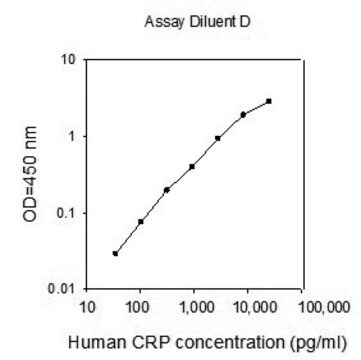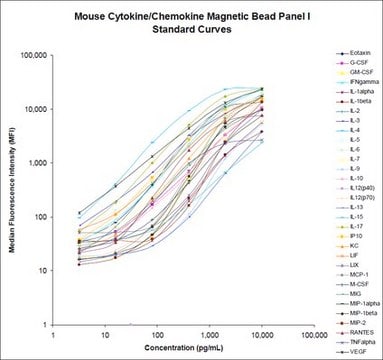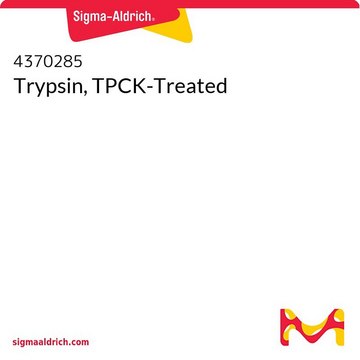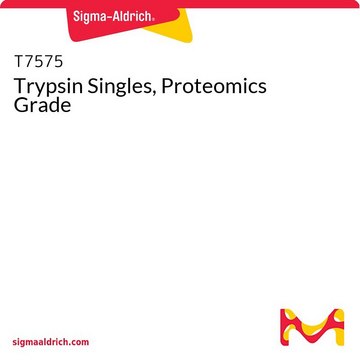4352135
iTRAQ® Reagents Multiplex Kit
Synonim(y):
isobaric tags for relative and absolute quantitation
Zaloguj sięWyświetlanie cen organizacyjnych i kontraktowych
About This Item
Kod UNSPSC:
12161503
NACRES:
NA.24
Polecane produkty
Powiązane kategorie
Opis ogólny
Contains iTRAQ® reagents 114, 115, 116, 117, the appropriate buffers and reagents for ten 2-plex, six 3-plex, or five 4-plex assays. 10-PK trypsin is sold separately. Each individual reagent is capable of labeling up to 100 μg of protein.
Zastosowanie
The iTRAQ® Reagents Multiplex Kit provides iTRAQ® reagents and protocol to label peptides after digestion. This widely used generic labeling kit can be used for virtually any workflow.
iTRAQ® Reagents Multiplex Kit has been used for the labeling of peptides for LC-MS (liquid chromatography–mass spectrometry)/MS analysis.
iTRAQ® Reagents Multiplex Kit has been used for the labeling of peptides for LC-MS (liquid chromatography–mass spectrometry)/MS analysis.
Komentarz do analizy
To view the general Protocol for iTRAQ Reagents, please visit this Protocol link.
To view the Chemistry Quick Reference Card for the iTRAQ Reagents, please visit this Chemistry Quick Reference Card link.
The Certificate of Analysis (CofA) for your specific lot is accessible by entering the product number and lot number at this CofA access link.
To view the Chemistry Quick Reference Card for the iTRAQ Reagents, please visit this Chemistry Quick Reference Card link.
The Certificate of Analysis (CofA) for your specific lot is accessible by entering the product number and lot number at this CofA access link.
Informacje prawne
iTraq is a registered trademark of AB Sciex Pte. Ltd.
Ta strona może zawierać tekst przetłumaczony maszynowo.
Hasło ostrzegawcze
Danger
Zwroty wskazujące rodzaj zagrożenia
Zwroty wskazujące środki ostrożności
Klasyfikacja zagrożeń
Acute Tox. 4 Dermal - Acute Tox. 4 Inhalation - Acute Tox. 4 Oral - Eye Irrit. 2 - Flam. Liq. 2 - Skin Irrit. 2 - STOT SE 3
Organy docelowe
Central nervous system
Kod klasy składowania
3 - Flammable liquids
Temperatura zapłonu (°F)
35.6 °F - closed cup
Temperatura zapłonu (°C)
2.0 °C - closed cup
Wybierz jedną z najnowszych wersji:
Masz już ten produkt?
Dokumenty związane z niedawno zakupionymi produktami zostały zamieszczone w Bibliotece dokumentów.
Klienci oglądali również te produkty
Sonia Osorio et al.
Plant physiology, 157(1), 405-425 (2011-07-29)
Tomato (Solanum lycopersicum) is an established model to study fleshy fruit development and ripening. Tomato ripening is regulated independently and cooperatively by ethylene and transcription factors, including nonripening (NOR) and ripening-inhibitor (RIN). Mutations of NOR, RIN, and the ethylene receptor
Quantitative proteomic approach to study subcellular localization of membrane proteins.
Sadowski PG, et al.
Nature Protocols, 1, 1778-1789 (2006)
Izhak Michaelevski et al.
Molecular & cellular proteomics : MCP, 9(5), 976-987 (2009-12-04)
Investigations of the molecular mechanisms underlying responses to nerve injury have highlighted the importance of axonal transport systems. To obtain a comprehensive view of the protein ensembles associated with axonal transport in injured axons, we analyzed the protein compositions of
Emilie Ernoult et al.
Proteome science, 6, 27-27 (2008-10-15)
The development of mass spectrometric techniques and fractionation methods now allows the investigation of very complex protein mixtures ranging from subcellular structures to tissues. Nevertheless, this work is particularly difficult due to the wide dynamic range of protein concentration in
Comparative Analysis of Secretome Profiles of Manganese(II)-Oxidizing Ascomycete Fungi.
Zeiner CA, et al.
PLoS ONE, 11, e0157844-e0157844 (2016)
Nasz zespół naukowców ma doświadczenie we wszystkich obszarach badań, w tym w naukach przyrodniczych, materiałoznawstwie, syntezie chemicznej, chromatografii, analityce i wielu innych dziedzinach.
Skontaktuj się z zespołem ds. pomocy technicznej













